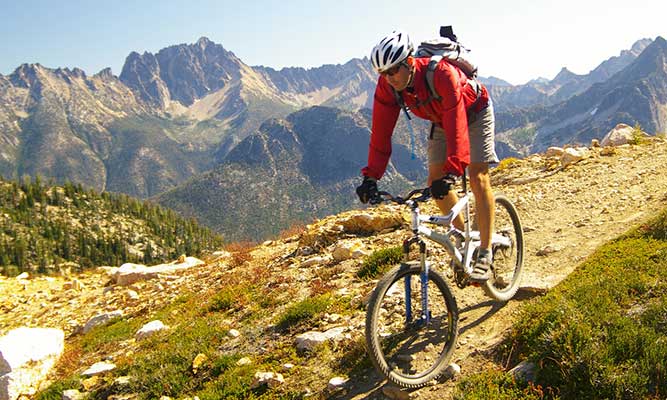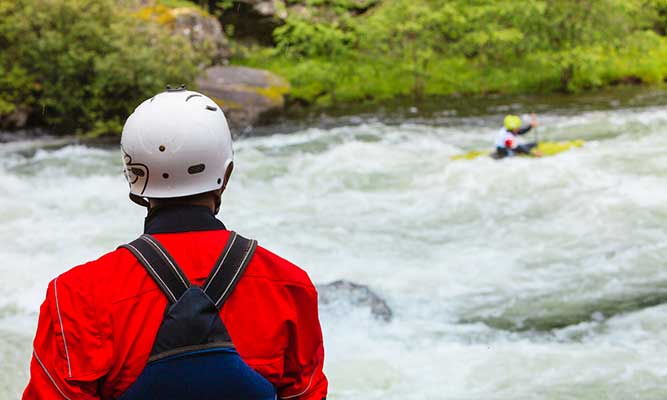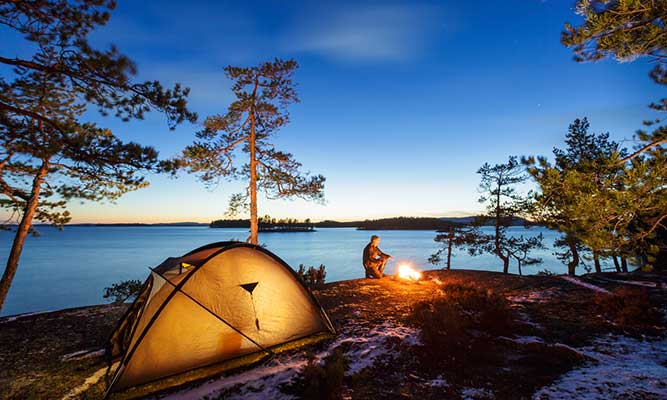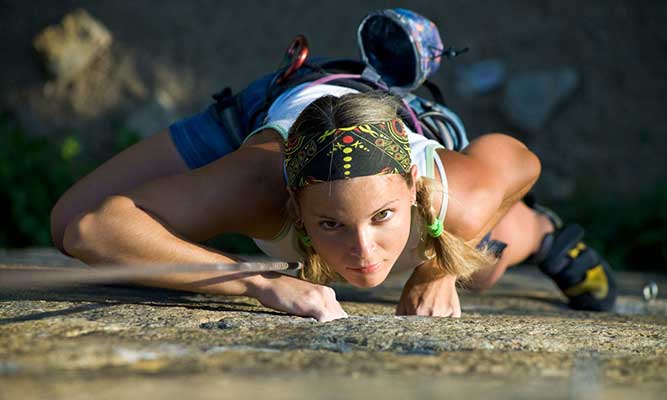Tourists to the UK might come to our shores thinking that our idea of a lovely summer’s afternoon is to sit in a beer garden with a pint, sip tea in a delightful little tearoom, or perhaps walk our British bulldogs on the moors. Well, yes - of course, some of us like doing these things – but a fair proportion of the population also likes to indulge in rather more daring outdoor activities.
From mountain biking to rock climbing and hang gliding to bog snorkelling (which is a real thing), the residents of the UK know how to have serious fun when the sun’s out! With great outdoor activities, though, come great storage difficulties. All those sports and adventures usually necessitate copious amounts of gear, which needs to be kept somewhere. Some spouses don’t like bits of bike in their lounge; some flatmates don’t enjoy having to move a canoe when they want to get into the kitchen, so alternative storage must be found. So, to help those adventurous Brits store their outdoor adventure gear safely, effectively and conveniently, we’ve rounded up some fab ideas for five popular UK outdoor activities.
1. Cycling

We’ve previously covered some fab
storage ideas for bikes. If you have outdoor space in which to store your bike securely then all is well, but if you have to keep it in the house then you need to find a way to do this without everyone banging their shins on the pedals or knocking it over on their way past. You can free up a good deal of space in your home by installing a rack on your wall or making your bike part of the furniture. There are some mighty clever indoor storage ideas for bikes – just make sure you clean the wheels off a bit before you bring it inside.
2. Canoeing

Depending on your level of commitment to this sport, you may well simply hire the equipment you need each time you go down to your local club. However, if you’re a real enthusiast, you may well have invested in your own canoe and related paraphernalia. If so, you could keep your canoe outside at home as long as you cover it loosely with tarp (to protect it from the sun and elements, though you must allow air to circulate) and store it upside down, slightly off the ground – you could balance it on bricks.
However, leaving it outside does, of course, leave it open to theft. There are racks available that you can fit onto your walls inside, thereby safely storing your canoe, but if you lack space then consider making enquiries with your local sailing club about storage fees. Alternatively, opt for self-storage to keep your canoe safe and dry during the months when you’re not using it regularly.
3. Camping

For some reason, tents are sold in bags that magically shrink as soon as the tent is removed, making it impossible to re-pack them. However compactly you fold or roll your tent, it will never go back into the bag it came in. This is just a fact.
There are alternative storage options though. Investing in a larger bag (which does not have to be a proper tent bag – it can be one of those cheap, zipped bags you might have seen filled with laundry at your mum’s house) is a good start. Buy three bags: one for the tent; one for the pegs, poles and folding chairs, and one for your electric hookup, lamps etc. Put these in your shed, if you have one, or your loft/cellar/on top of your wardrobe - anywhere dry and inaccessible to mice. The best way to store sleeping bags is to put them into those bags that you can vacuum the air out of, making them very flat and easy to store.
The thing to remember about camping storage is that whatever you do, make sure that your gear is accessible at all times, because the best camping trips happen spontaneously. We never know when the weather will be nice enough to sleep under canvas, so if the forecast is good, pick up those three bags and your sleeping bags, sling them in the car, and go!
4. Skiing

Ski equipment is expensive, and unfortunately, that means it’s also rather at risk of being stolen if not stored securely. It is also surprising how such narrow objects can be so difficult to store indoors – in theory, the surface area of skis is very small, yet in practice, it can be tricky to locate them anywhere in the house where they will not fall or get damaged. There are ski wall racks available, and you can reduce the bulk of your skiwear by storing it in vacuum bags, or you could invest in a secure, locked cabinet for your garage.
Ultimately, where you store your ski gear depends on how often you use it – if you go to a dry ski slope regularly between holidays then you will need to keep your equipment at home, but if you only use it when you go on holiday then consider using self-storage to keep it secure, dry and clean between uses.
5. Rock climbing

Rock climbers are very organised and know the importance of keeping their equipment well-ordered and in good repair. No-one likes untangling knots! There are various custom-made storage solutions for rock climbing equipment, but many climbers prefer to improvise with old wardrobes (with extra hanging rails) and plastic storage chests for their rack ropes. A tent can be stored in the loft, shed or above the wardrobe (as above), and sleeping bags, waterproofs and clothes can be kept clean, dry and compact in a vacuum bag.
Other sports
Other popular outdoor adventure sports include hang gliding, field sport, snorkelling, surfing and fishing – all of the equipment for these sports offer their own unique storage challenges. Thinking creatively about your storage needs can keep the
costs of storage low (and ensure minimal fall-outs within the household over what can be stored in the kitchen/dining room/bathroom), but security has to be your number one consideration.
If you don’t have secure storage in your garden, and there is no room in your house, then self-storage is a cost-effective, safe solution that you could consider. If you do end up storing it at home, check that your home insurance covers your equipment (whether kept inside or in the garden) as sometimes policies have to specifically include it in order for it to be covered. Otherwise, if stolen, your equipment will be expensive to replace and you will be unable to do the sport you love whilst you wait for those replacements to arrive. You’ll have to walk the bulldog to the tearooms instead.
*****
Discover more
how to articles on Safestore’s
blog where you’ll find a range of topics; from home improvement ideas to innovative storage tips and more. Or, if you’re looking to create more space at home we have a range of self storage options in over 100 locations – find your
nearest store for a quote today.